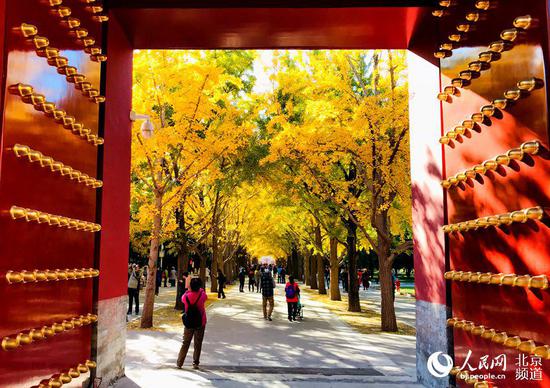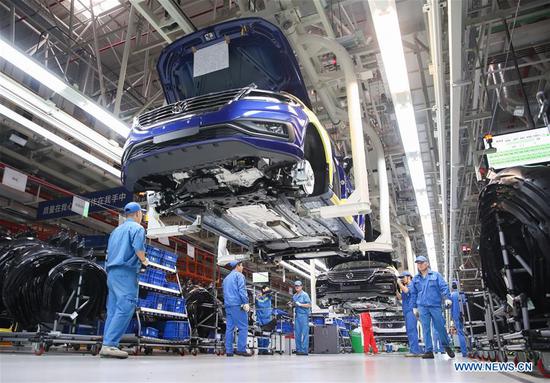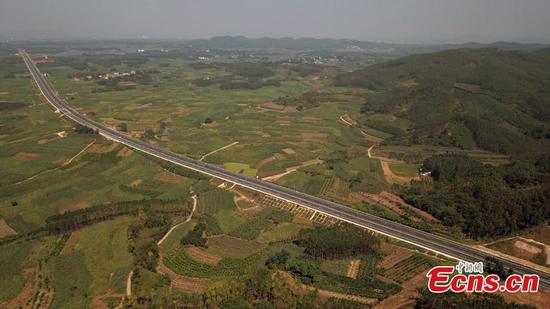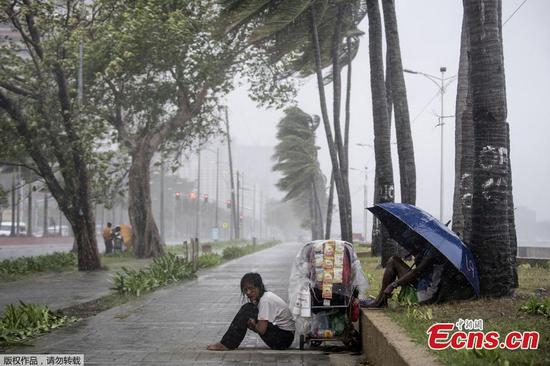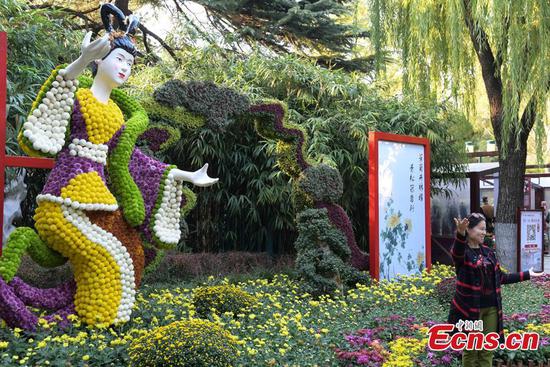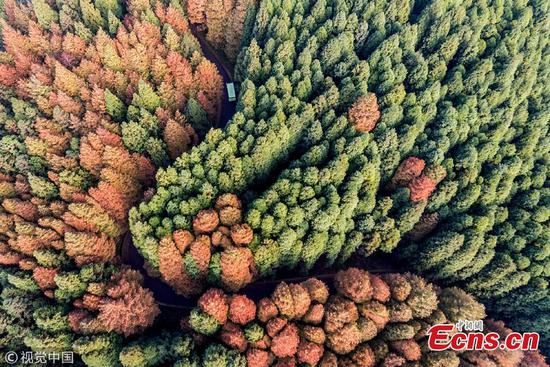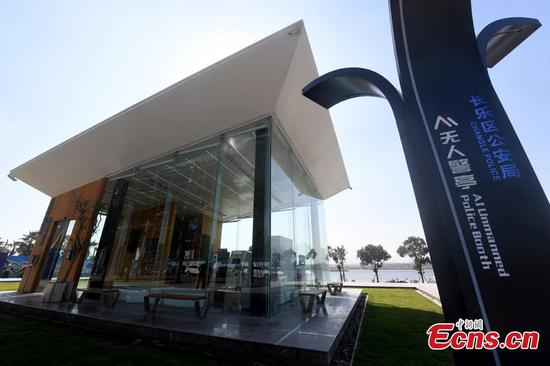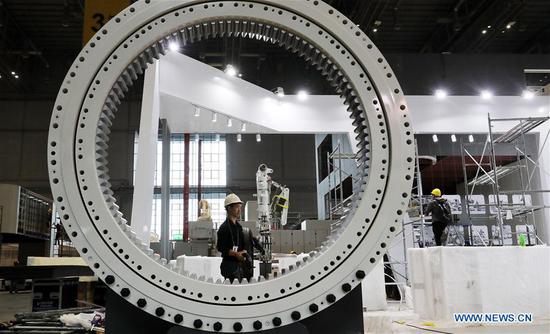Outside a greenhouse, Zhang Jiuhe points to a screen showing multiple digits and explains what is going on.
"It is like feeding milk to babies," the farmer said. "You calculate the components of the nutrition solution for irrigating the plants, and monitor the real-time air and water temperature on the screen."
Inside the greenhouse, the nutrient solution was dripping from long pipes laid parellel to the leafy green. Soil temperature, air humidity and soil PH could all be adjusted by Zhang in real time.
This is the tech transformation happening in the city of Shouguang, China's major veggetable hub in the eastern province of Shandong.
The gear is expected to bring larger and finer yields from the city's numerous winter greenhouses, meeting the country's growing demands for high-quality vegetables.
Each year, around 8 million tonnes of vegetable are traded in Shouguang. The city, with more than 40,000 hectares of greenhouses, provides one-third of the vegetables for Beijing.
Growing vegetables in the freezing northern winter has always been a challenge for local farmers.
In the past, they burned coal to raise the temperature for plants to grow, and each season consumed around five tonnes of coal. It was not until the 1980s that local farmers started building greenhouses, making use of sunlight to get the best temperatures.
"Now the greenhouses have evolved for five or six generations," said Xu Meirong, researcher with local agricultural bureau. " Many have been equipped with automatic curtain rolling machines and automatic spray; farmers can control them remotely on their phones."
China has seen growing consumer demand for green and organic vegetables, and more producers have turned their focus to quality over quantity, according to a 2016 survey by market analyst Zhiyan.
More recently, traditional domestic e-commerce heavyweights such as Alibaba and JD have set up more offline stores offering select fresh products, all well received among young consumers.
In Shouguang, producers are adjusting to the change.
Zhang said he upgraded his greenhouse to maintain a steady high quality yield, something hard to achieve with traditional methods, as well as reduced water usage and pollution caused by over-fertilizing.
In his greenhouse, the yield improved by around 20 percent. He is also experimenting with soil-free farming that can boost yield by another 10 percent.
The products are around 20 to 30 percent pricier, but sales are still expanding. Zhang said he recently inked a sales deal with a company in the southern city of Shenzhen, some 2,000 km from Shouguang.
About 80 percent of the vegetables have been branded and sold in some 400 supermarkets and high-end communities in 20 cities including Beijing and Shanghai.
The local government is also working with academic institutions to promote the local brands nationwide.
"We are also exploring more cutting edge greenhouse technologies, setting up quality tracing system and market channels," said Xu, a local researcher.
Zhang has hired three researchers with doctorate degrees to help him find new methods to control the greenhouse environment.
"In the past, we worked on skills for growing plants," Zhang said. "But now, we compete in the field of science and technology."











